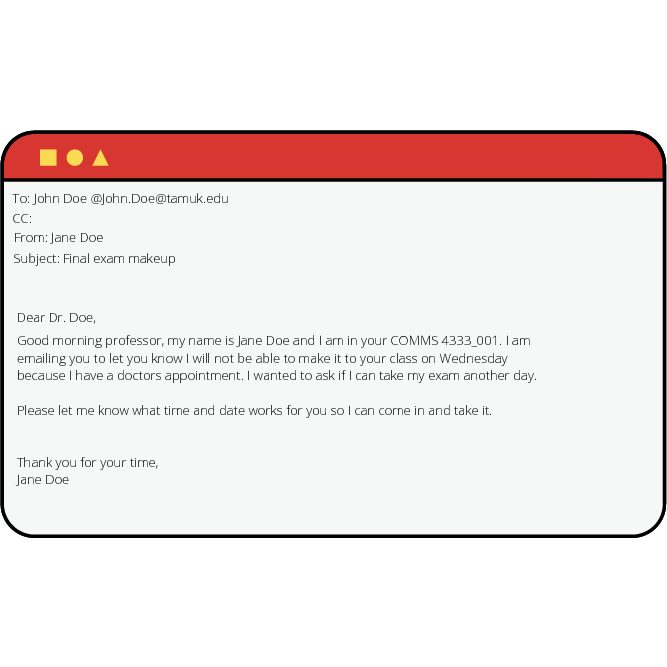The correct, proper way to reach out to faculty
Writing emails is not something we were taught in high school, but it is never too late to learn.
As a college student, the ability to write professional emails is an important skill you must have as this will benefit you in the long run.
Well-written emails are of the utmost importance because it makes it easier for the recipient to understand and act on the message that was sent.
Always remember that any email you send to faculty members are formal.
If you are unsure of how to address anyone, search them up on the school’s website, tamuk.edu to see what position they hold and go from there.
Side note, add your name to the carbon copy option so that you receive the email as well.
Before you start writing, you must already have a recipient and the message in mind.
This will help you come up with the subject line, which is what the recipient sees in their inbox.
Since you are shooting for formality, make sure your subject line is full of detail, but do not make it too long.
Once you have figured out the first steps, it is time to come up with a salutation, this directly addresses the individual you are sending the email to.
You can use “dear,” “hello,” “greetings” and more. If you are unsure of who to send the email to, use “to whom it may concern.”
When reaching out to a faculty member, address them by their respective position and follow up with their first and last name after. “Dr. John Doe,” or “Professor John Doe,” do not forget to add a comma after their last name. If they do not have Ph.Ds, refer to them as Mr. or Ms.
It is important to note that not all faculty know who you are, so it is best to you introduce yourself before you write your message.
If you are emailing a professor, let them know you are in one of their classes, so they know more or less the topic of the email.
After the brief introduction comes your body. The body is the elaborated message, the main point of the email.
Make sure you write clear, concise and detailed sentences to avoid miscommunication. Elaborate as much as you can but try not to make the email too long unless you have a couple of matters to address.
Try not to go off topic either.
Once you have finished with the matter, wrap up your email.
How you end an email is equally important, it can leave a good impression.
The most common way to close an email is with the word “sincerely,” you can also use “best,” “thank you for your time” or a simple “thank you” don’t forget to add a comma after, skip some spaces and write your name.
Finally, double check for any grammar or punctuation errors.
Read it through one more time and if you are satisfied with it, hit send and wait for a reply.
